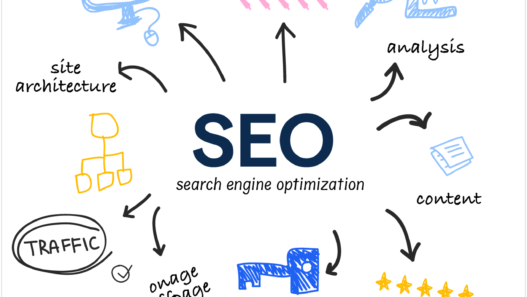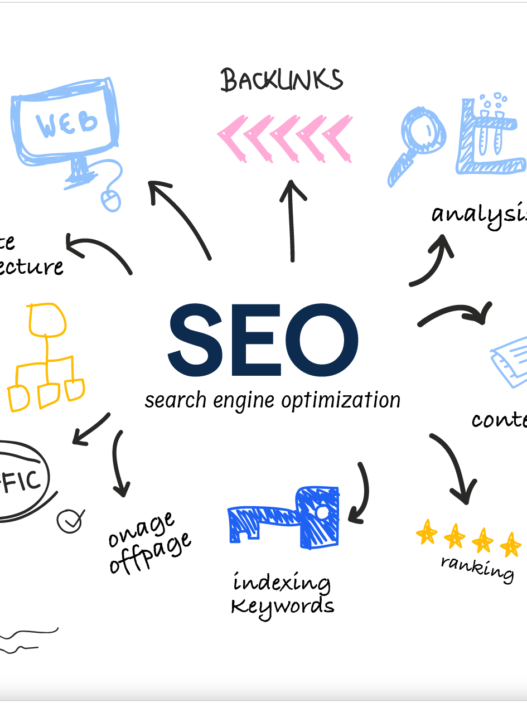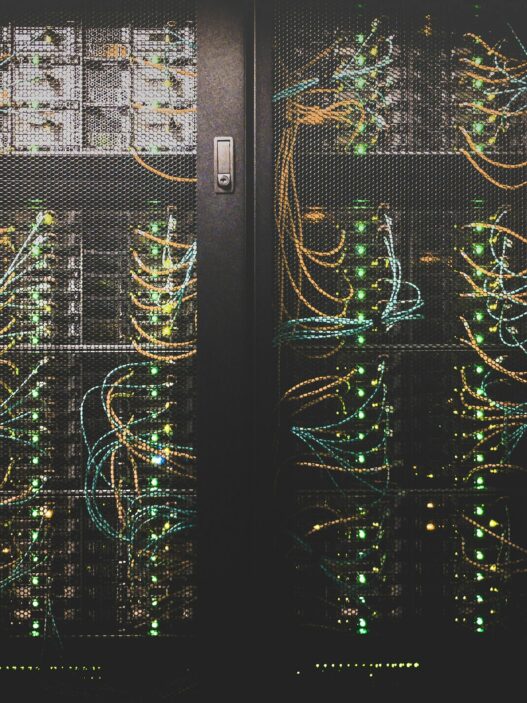There is no sign that the pace of technological advance is going to slow down. Actually, the future of tech is coming faster than we believed possible, and it’s not all about shiny gadgets and over-hyped startups. We’re about to go into a period where new technologies — from advanced artificial intelligence and robotics to quantum computing and green energy — are going to fundamentally change every aspect of our existence. And in the most comprehensive article ever written about future tech trends, we’ll explore exactly what these future tech trends mean, how your world will be disrupted by them, and what you really need to be paying attention to so you can prepare.
A New Chapter of Technology Convergence
The focus isn’t solely on one breakthrough technology anymore. The future is a set of disparate, co-rising trends that are beginning to interact in surprising ways. By 2025 and beyond, the demarcation lines between AI, robotics, quantum computing, and even renewable energy will fade as these disciplines come together in a way that powers new ecosystems of tech. Such integration is poised to unlock potential we can’t yet imagine—from smarter cities and more effective supply chains to new levels of personalization in health care and education.
What Does Convergence Mean?
Broadly speaking, convergence is the coming together of distinct technologies to create a greater whole. While 5G will deliver a vital infrastructure for enhanced communication between your smartphone and other smart devices in your home, it will be the components of artificial intelligence (AI) that will also touch all aspects of your smartphone experience. That’s all the future in a nutshell.
AI: The Truth behind the Hype
AI is no longer science fiction; it is not something that can be put off until tomorrow. It’s everywhere — in your social media feeds, your home assistants and even in your car. But the next generation of AI, sometimes dubbed agentic AI, is likely to do more than simply help us. It will be proactive; it will learn from every single interaction, and determine with few if any human intervention.
Meet Your New Digital Collaborator: Agentic AI
Unlike the AI we are familiar with today, which is typically based on static dataset suckling and responses that are pre-programmed, agentic AI learns and evolves so long as the power is on. That means it can anticipate your needs, automate complex tasks, and even partner with other AIs to build sophisticated workflows. Think of it as an AI that can watch how your business operates, save you headaches by catching problems before they happen, and negotiate with suppliers on your behalf so you can spend more of your time on the bigger decisions.Ethics and the Need for Governance
With great power comes great responsibility. The more autonomous AI becomes, the more critical ethical considerations and governance will become. Organizations are already starting to bet on AI governance platforms to make sure that the systems operate in a transparent and ethical manner. How humans will play a central role in establishing statesmacy dressed up discussions to avoid bias, privacy, and accountability in such future world where AI can potentially control our end to end lives.
The rise of a robot workforce (ECO 3119 The robot workforce ).
One of the most futuristic tech is robotics. Not content to be stuck at machines in a factory doing repetitive tasks, robots are emerging as adaptable, autonomous machines that can share workspaces with humans. We’re already catching the first glimpses of this metamorphosis in warehouses, hospitals and even our homes.
Meta Robots: Versatility Explored
The robots of the future won’t be one trick ponies. Polyfunctional robots are built to perform many different tasks, from picking and packing in warehouses to helping in surgeries and conducting routine maintenance. The versatility not only increases productivity, but also enables entirely new business models. Take, for instance, a multifunctional robot working in a retail store, which not only regulates the stock but also interacts with customers by providing support such as product recommendations, and yet can also perform other tasks as cleaning, all while not requiring constant supervision by a human counterpart.
The Potential of Collaborative Robots (Cobots)
The next generation of robotics — represented by the rise of collaborative robots, or cobots, designed to work safely alongside humans. Rather than replacing human workers altogether, cobots will supplement us, tackling the heavy work or most dangerous jobs while we perform the creative and decision-making aspects. This partnership will revolutionize the workplace, allowing work to be safer and more efficient, while opening up whole new industries.
Quantum Computing
Pushing Past the Limits of Classical Computation
As if we are not already living through the most advanced computing era so far, quantum computers will soon hold the key. Quantum computing builds on the tenets of quantum mechanics, enabling computers to execute calculations exponentially faster than ever possible on classical computers.
The Quantum Leap
And, imagine doing so on challenging optimization problems in seconds as opposed to years. (At least, the ones built this way can; other ways, like superconducting circuits, are different.) Quantum computers can solve problems in cryptography, materials science, and drug discovery that no supercomputer—no matter how powerful—could attempt. This breakthrough is more than just increasing speed; it is about unlocking entirely new avenues of scientific research and commercial applications.
Getting Ready for a Post-Quantum World
One of the greatest dangers from quantum computing is the threat to security. Many of today’s methods of encryption depend on the difficulty of certain mathematical problems — problems that quantum computers could solve in a fraction of the time. Because of that, we’re already seeing a move toward something called post-quantum cryptography, a new generation of encryption techniques that would be secure against quantum attacks.
5G, 6G, and Next Generation Connections
We live in a world that’s more connected than ever before, and that’s only getting better. With the introduction of 5G networks, we’ve already witnessed improvements in speed, latency and capacity. The Future — 6G is just around the corner
What to Expect from 6G
While 5G has facilitated innovations from smart cities to autonomous vehicles, 6G looks to elevate connectivity to the next level. We’re talking about networks that are speedier, more stable, and that can support even more connected devices at once. Envision a future, in which almost everything connected — your refrigerator, your wearable fitness tracker, and your newest tech gizmo — will be connected in real-time to each other, made possible by ultra-high-speed networks that can lower latency to near-zero levels.
Beyond Just Speed
The real promise of 6G isn’t simply better internet. It connects the internet by creating a digital environment in which devices complement each other to deliver us downloads simultaneously from multiple sources without bottlenecking, holograph calls, augmented reality and you can even be on a digital island pretending that you are there. Such connectivity will be essential for the mainstream uptake of new technologies such as spatial computing and the Internet of Things (IoT).
Green Technology and Sustainability: For the Love of Tech
With the climate crisis growing ever more dire, sustainability is no longer an option but rather an imperative. Future tech doesn’t just mean designing better gadgets or faster computers; it means lessening our impact on the environment and making our planet more sustainable.
Smart Grids and Renewable Energy
One of the most exciting green tech industries is the production of renewable energy technologies. Solar, wind and bioenergy are already making strides, but future breakthroughs will be as much about efficiency and sustainability. AI and machine learning will empower smart grids to optimize energy distribution networks, minimizing waste and allowing for local peer-to-peer energy trading.
Green Tech in Data Centers
Data centers form the backbone of our increasingly digital world, but they also require tremendous amounts of energy. In the future, tech will redefine the operational model of these centers with the advent of energy-efficient computing and AI-powered energy management systems that cut down power usage to a great extent. This change isn’t just good for the environment — it’s also a necessity in shrinking operational costs in a more digital economy.
The Future is Personal:Wearable Technology and the Internet of Things
Wearables have evolved beyond just fitness trackers. But today we are on the cusp of a revolution in human-technology interaction, one in which wearables will become ubiquitous, embedded in our lives to support our health, productivity and so much more.
Beyond the Fitness Tracker
Wearables will no longer be just accessories but will be on the cusp of becoming part of our everyday lives. We’re talking about devices that can track your health in real time, deliver augmented reality experiences, and even assist you with stress and sleep. With AI and IoT at their core, these wearables will do more than just monitor your metrics, they will offer insights that can help you make healthier choices.
The Connected World
Wearables will become part of an interconnected system with other smart devices, where information exchange will be easy and secure. This convergence will create personalized experiences that cater to your distinct needs, such as setting the appropriate ambient light and temperature in your home based on your activity levels and real-time health alerts when something is amiss. The potential is limitless, and limited only by our imagination.
How Technology Will Save Lives In The Future Of Healthcare
Tech has one of the most promising sectors in healthcare in the future. For example, it’s expected that technology will revolutionize health and wellness through AI-driven diagnostics and personalized medicine.
Diagnostic and Treatment AI
Can you picture a scenario in which an AI system is able to examine your medical records, genetic information, and lifestyle inputs to forecast diseases that may be a risk to you before they develop into serious issues? That isn’t science fiction—it’s the future of health care. These AI-powered diagnostics are already showing great potential in medical areas like cancer detection, where the earlier the diagnosis, the more lives can be saved. As these systems are trained and developed more, we will start to see personalized treatment plans based on each person’s genetics or other unique circumstances all delivered by an AI designed to influence and guide our health decisions.
Wearable Health Monitors
Alongside, wearables are improving the healthcare realm. Health monitoring devices that slip on the wrist will continuously monitor heart rates and other metrics, warning users and providers of potential concerns as they arise. Such continuous monitoring assists not just in early detection, but in the management of chronic conditions, thus leading to enhanced outcomes and minimized healthcare expenditure.
Personalized Medicine
The age of one-size-fits-all medicine is over. With advances in genomics and biotechnology, individual treatments can now be customized. AI-driven personalized medicine analyzes genetic data and predicts patients’ responses to certain treatments. It offers the hope of not only better outcomes but also reduced side effects and overall treatment costs.
Cybersecurity: Protecting the Cyber Landscape
With an increasingly interconnected world, cybersecurity is more important than ever. As AI, IoT, and other emerging technologies proliferate, cybercriminals are presented with an ever-expanding attack surface.















